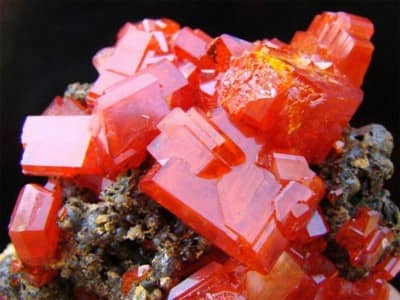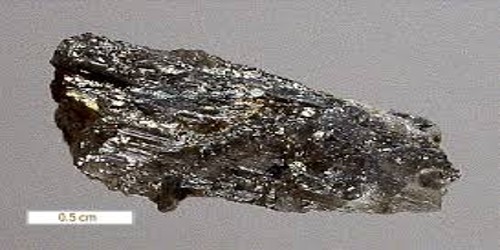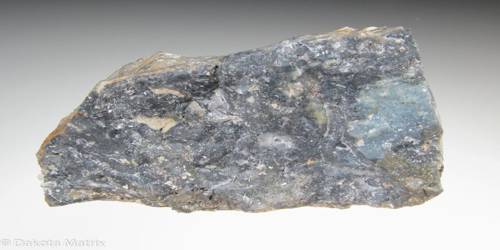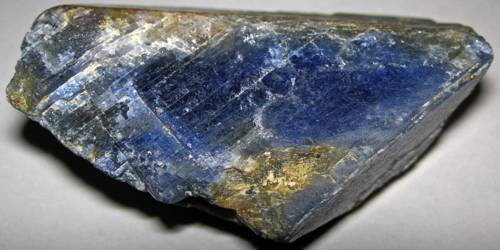Lopezite is a rare red chromate mineral with chemical formula: K2Cr2O7. It crystallizes in the triclinic crystal system. It is a rare red triclinic chromate mineral. It is also an orange-red mineral composed of potassium dichromate. It is a mineral consisting of dichromate of potassium and found in the nitrate deposits of Chile. It forms as a secondary mineral in vugs in massive nitrate rocks.
Lopezite was first described in 1937 for an occurrence in Iquique Province, Chile and named after Chilean mining engineer Emiliano López Saa (1871–1959).
General Information
- Category: Sulfate minerals (chromate)
- Formula: K2Cr2O7
- Crystal system: Triclinic
- Crystal class: Pinacoidal (1) (same H-M symbol)
- Color: Orange-red, red.
 Fig: Lopezite
Fig: Lopezite
Properties
Lopezite contains potassium, chromium, and oxygen. Chromium is a shiny, hard and brittle metal. It has a glassy feel to it, has a hardness of 2 1/2 and can contain light yellow streaks. Most lopezite offered for sale to collectors is artificially produced. Synthetic varieties also exhibit monoclinic crystals.
- Crystal habit: Granular or spherical in small crystals on the natural environment. Prismatic on lab-grown crystals.
- Cleavage: Perfect
- Mohs scale hardness: 2 1⁄2
- Luster: Vitreous
- Streak: Light yellow
- Diaphaneity: Transparent
- Specific gravity: 2.69
- Pleochroism: Visible
- Solubility: Soluble in water
Occurrence: A rare secondary mineral in vugs in massive nitrate rock.
It occurs as rare vug fillings in nitrate ores in association with tarapacáite (K2CrO4), dietzeite and ulexite in the Chilean Atacama and are reported from the Bushveld igneous complex of South Africa.
Association: Tarapac´aite, dietzeite, ulexite (Oficina Maria Elena, Chile).
Information Source:
















